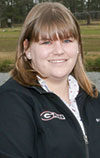Above-average rainfall equals above-average problems
Producers throughout much of the southeast U.S. have received above-average rainfall since Hurricane Michael hit last fall. Many of these producers have battled waterlogged soils and cloudy weather that led to delayed plantings or reduced yields of winter annual forages.
Based on reports from University of Georgia Extension climatologist Dr. Pam Knox, these wet conditions will stick around throughout the summer growing season. Forage producers will need to adjust their fertilization plan to prevent future nutrient losses.
Fertilizer can be lost through multiple pathways
The consequences of wet soil conditions on soil fertility will depend on topography, soil type and land management. Bare soils or steep hills are prone to runoff, whereas leaching is more common in sandy soils. All nutrients can be lost in runoff, but nutrient mobility affects nutrient losses due to leaching (see Table 1). The less mobile the nutrient is, the less likely it is to be leached.

Volatilization can occur when nitrogen (especially urea) is applied to waterlogged soils. Finally, denitrification can occur when nitrates are converted to nitrogen gases because the denitrifying bacteria use nitrates instead of oxygen in their metabolic processes. These simplified pathways for nutrient losses are illustrated in Figure 1.

How do I adjust my forage management for (continued) above-normal precipitation?
Maintaining ground cover is one of the easiest ways to prevent runoff. Figure 2 shows the results of a rainfall simulation on two well-managed fields, a poorly managed field (likely overgrazed) and bare soil. The top row of jars represents runoff, and infiltration is seen in the lower row. It is clear that the well-managed fields with full ground cover have less runoff and more infiltration than the poorly managed field or the bare soil. Employing management practices to promote ground cover will increase nutrient retention and uptake in the soil. These practices include leaving the appropriate residual forage height after harvest or grazing (3 to 9 inches, depending on the species), respecting rest periods and fertilizing to ensure stand persistence.

It is important to test your soils to accurately determine the fertilizer needs of the forage. In general, hayfields should be tested every year, and pastures should be tested every three years. It is important to take representative soil samples, avoiding high-traffic areas around gateways and hay or water sources. Given the wet conditions this winter, many producers may have designated a portion of their farm as “sacrifice areas” to feed hay or hold livestock when winter annual pastures were too wet to graze. Remember to sample these fields separately as the nutrient concentrations are likely much greater because of the higher stocking densities.
Splitting fertilizer applications will help match fertilizer applications to plant needs to prevent nutrient losses throughout the season. Ideally, nitrogen fertilizer would be applied after each harvest to prevent losses, as detailed above. Nitrogen use efficiency will increase 25 to 30 percent over the long term. Yield will be better distributed across the season and may increase by 5 to 10 percent because of the greater uptake efficiency. Potassium should be applied twice during the season. For warm-season perennials, apply 40 to 50 percent of the recommended rate in the late spring and 50 to 60 percent in the middle to end of the season. ![]()
Lisa Baxter, Ph.D., is an extension forage agronomist for the University of Georgia. Email Lisa Baxter.












